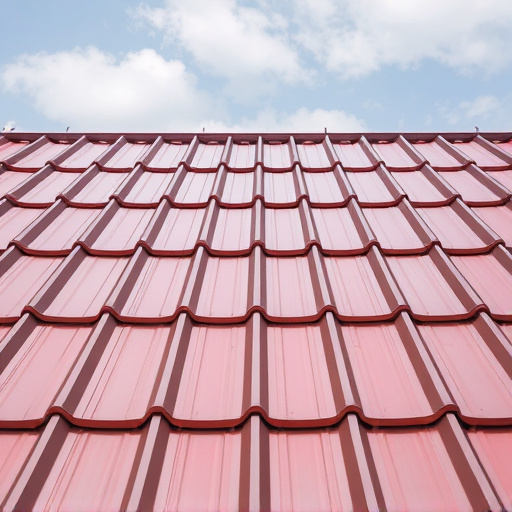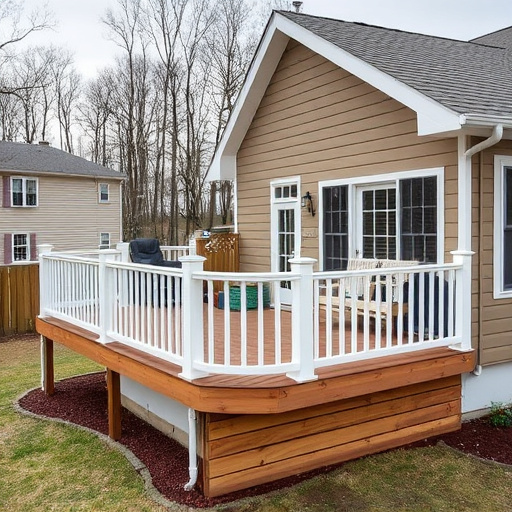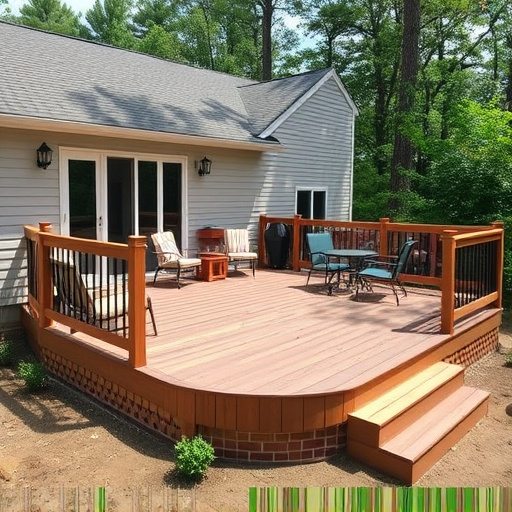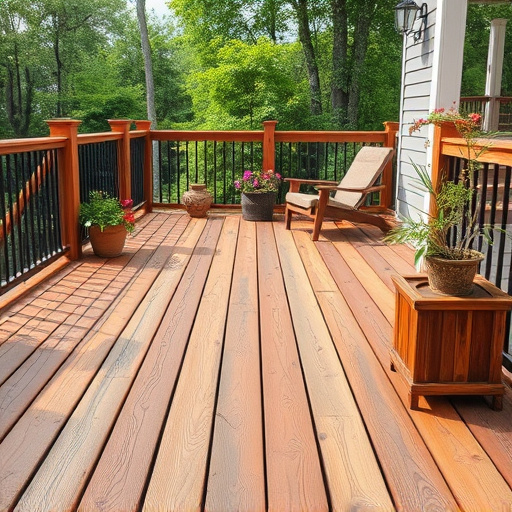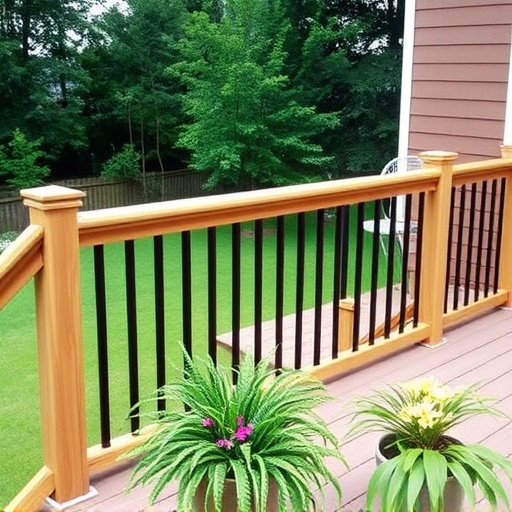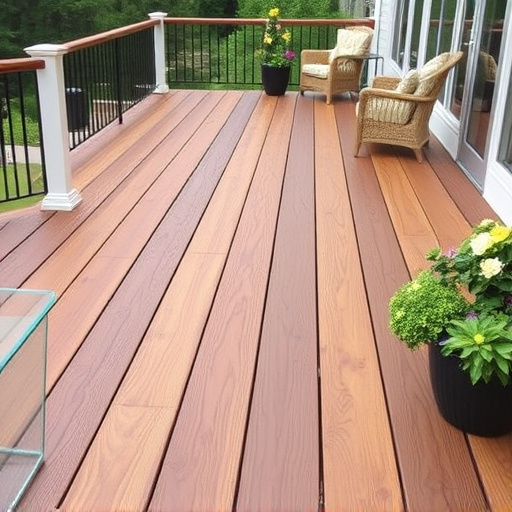Designing durable deck stairs in coastal and windy regions requires selecting weather-resistant materials like treated wood or composite decking, prioritizing structural integrity with robust construction methods and strong fastenings. Integrate seamlessly with existing roofing and siding for aesthetic harmony. Implement wind-resistant features, wide steps with non-slip surfaces, secure handrails, proper drainage, and regular maintenance—including sealing, staining, debris removal—to safeguard and prolong the lifespan of your deck stairs. For expert guidance tailored to local conditions, consult home exterior services professionals.
Enhance your coastal or windy area with robust and beautiful deck stairs. This guide explores innovative ideas tailored for these unique environments, ensuring safety and durability. From material selection to design considerations and installation tips, we provide comprehensive insights for creating long-lasting deck stairs. Discover expert advice on choosing the right materials, navigating windy areas, and routine maintenance to withstand harsh conditions. Elevate your outdoor space with functional and stylish deck stairs that complement your coastal or windy area.
- Choosing the Right Materials for Deck Stairs in Coastal Environments
- Design Considerations for Safe and Durable Stairs in Windy Areas
- Installation Tips and Maintenance for Long-Lasting Deck Stairs
Choosing the Right Materials for Deck Stairs in Coastal Environments
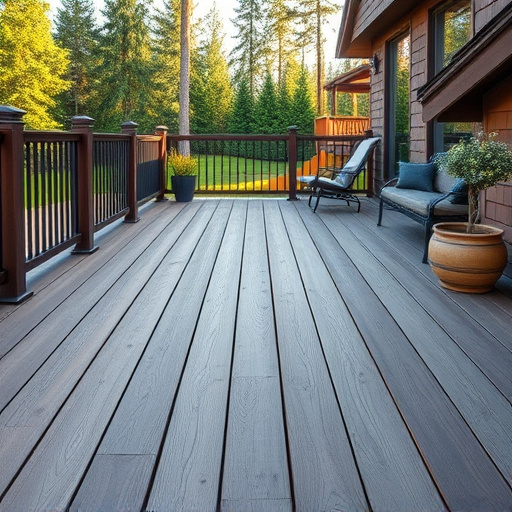
When designing deck stairs for coastal and windy areas, selecting durable materials is paramount to ensure longevity and withstand harsh weather conditions. In such environments, salt air and frequent storms can accelerate material deterioration, making it crucial to choose weather-resistant options. Treated wood, like pressure-treated cedar or redwood, is a popular choice due to its natural resistance to rot and insects, as well as its ability to withstand salt water exposure. For a more low-maintenance approach, composite decking materials offer an attractive alternative, replicating the look of wood while providing superior durability against moisture and UV rays.
Additionally, considering local building codes and structural integrity is essential. Deck stairs in coastal regions often require sturdier construction methods and stronger fastenings to resist high winds. Incorporating features like bracket support systems and robust railings can significantly enhance safety and stability. Moreover, choosing materials that are compatible with commercial roofing and siding repairs can be advantageous for property owners looking to integrate the deck seamlessly with their overall exterior aesthetic and functionality.
Design Considerations for Safe and Durable Stairs in Windy Areas
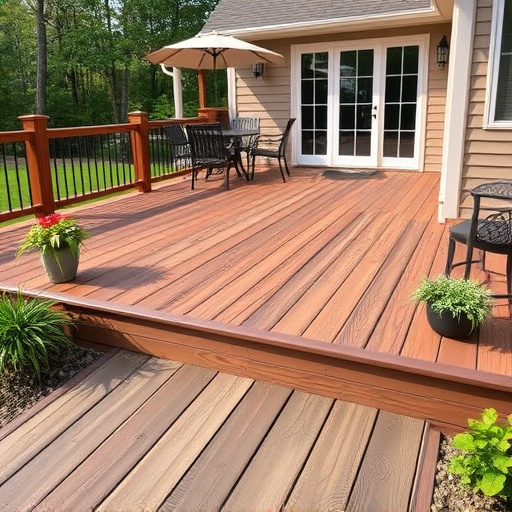
When designing deck stairs for coastal and windy areas, safety and durability are paramount. The key design considerations include ensuring a sturdy structure that can withstand high winds and heavy foot traffic. One effective strategy is to incorporate robust materials like pressure-treated wood or composite decking, which offer superior resistance against rot and decay. Additionally, wider stair steps with non-slip surfaces provide better traction, reducing the risk of accidents during stormy conditions.
For added stability, consider integrating wind-resistant features such as strong handrails and secure fastenings to both the stairs and deck. Upgrading roofing and siding, along with robust exterior home improvements, can further protect the structure from harsh weather. Furthermore, ensuring proper drainage systems, like efficient siding and gutters, prevents water accumulation, which is crucial for maintaining the overall integrity of the deck stairs over time.
Installation Tips and Maintenance for Long-Lasting Deck Stairs
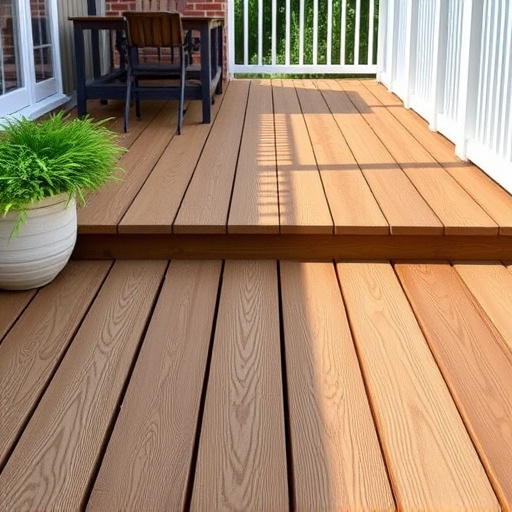
When installing deck stairs in coastal or windy areas, proper preparation is key to ensuring longevity. Start by choosing durable materials such as treated wood or composite decking, which are better equipped to withstand harsh weather conditions. Ensure a solid foundation by properly anchoring the stair structure to the deck and into the ground, using techniques suitable for your region’s soil stability. Regular inspection is vital; check for loose joints, damaged boards, or signs of rot, addressing issues promptly to prevent further complications.
Maintenance plays a significant role in extending the life of your deck stairs. Keep the area clear of debris and regularly clean the stairs with mild detergent and water to remove dirt and salt buildup (common in coastal regions). Apply fresh coats of sealants or stains annually to protect the wood, especially if you’ve opted for natural materials. For residential siding installation or repair, consider consulting home exterior services professionals who can offer tailored advice based on your region’s unique challenges, ensuring a robust and safe deck stair system.
When designing and installing deck stairs in coastal and windy areas, prioritizing safety, durability, and aesthetics is key. By selecting the right materials, considering functional design elements, and implementing proper installation and maintenance practices, you can create long-lasting and visually appealing deck stairs that withstand harsh weather conditions. Remember, investing in quality construction ensures your deck remains a safe and enjoyable space for years to come, offering both functionality and resilience against the elements.
